JBL XPL-160 loudspeaker
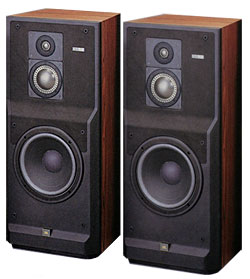 A visiting manufacturer recently told us here at Stereophile of an ongoing informal "survey" he was conducting. He would ask strangers to name three brands of loudspeakers. Their responses were not what I would have expected. They almost invariably named Japanese companiestwo of the most commonly mentioned were Hitachi and Panasonic. Other than my spell-checker insisting that I change "Hitachi" to "hibachi," I have nothing in particular against these two manufacturers; they are well-recognized in many product categories. But loudspeakers? I can only guess that the respondents were dredging up the only consumer electronics companies that came readily to mind.
A visiting manufacturer recently told us here at Stereophile of an ongoing informal "survey" he was conducting. He would ask strangers to name three brands of loudspeakers. Their responses were not what I would have expected. They almost invariably named Japanese companiestwo of the most commonly mentioned were Hitachi and Panasonic. Other than my spell-checker insisting that I change "Hitachi" to "hibachi," I have nothing in particular against these two manufacturers; they are well-recognized in many product categories. But loudspeakers? I can only guess that the respondents were dredging up the only consumer electronics companies that came readily to mind.
My list for most recognized loudspeaker brands would most certainly have included JBL. How could it not? They have been involved in home high-fidelity since 1954. And for years before that in professional audioprimarily motion picture theater sound, a field in which they are still active. In short, they were around before there was such a thing as "hi-fi."

 When I reviewed VTL's 25W Tiny Triodes in
When I reviewed VTL's 25W Tiny Triodes in 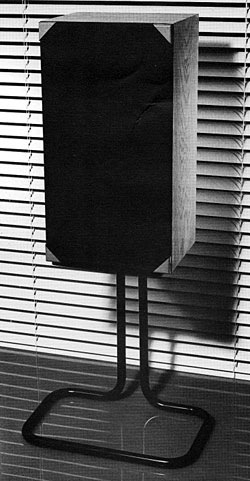 The Gale loudspeaker dates back to the early 1970s. As I understand it, the basic design resulted from a collaboration of Ira Gale and Sao Win, who were college classmates at the time. Their speaker proved very popular in England and was subsequently imported to the USA during the mid-1970s by Audio Technica. Recently, Techport (the folks who import the Perreaux line) has taken over US distribution.
The Gale loudspeaker dates back to the early 1970s. As I understand it, the basic design resulted from a collaboration of Ira Gale and Sao Win, who were college classmates at the time. Their speaker proved very popular in England and was subsequently imported to the USA during the mid-1970s by Audio Technica. Recently, Techport (the folks who import the Perreaux line) has taken over US distribution.
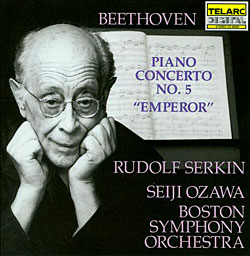 Beethoven: Piano Concerto No.5 "The Emperor"
Beethoven: Piano Concerto No.5 "The Emperor"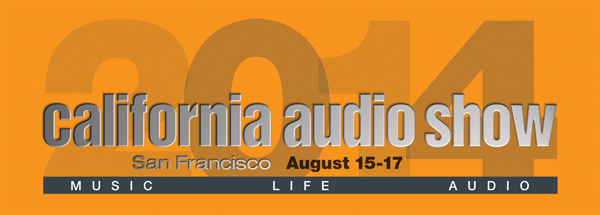
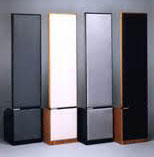 I wish I could be enthusiastic about the Acoustat Spectra 11an electrostatic/dynamic hybrid selling for $999/pair. At first glance, the Acoustat Spectra 11 looks like a good deal. They could almost be called knock-offs of the Martin-Logan Sequelsthey're about the same size. As with the Sequels, there are moving-coil bass cabinets below, electrostatic panels on top. The Spectra 11 cannot be bi-wired and does not come with spikes. Tiptoes are recommended, and I used them. I let the speakers run in for about 24 hours before doing any serious listening.
I wish I could be enthusiastic about the Acoustat Spectra 11an electrostatic/dynamic hybrid selling for $999/pair. At first glance, the Acoustat Spectra 11 looks like a good deal. They could almost be called knock-offs of the Martin-Logan Sequelsthey're about the same size. As with the Sequels, there are moving-coil bass cabinets below, electrostatic panels on top. The Spectra 11 cannot be bi-wired and does not come with spikes. Tiptoes are recommended, and I used them. I let the speakers run in for about 24 hours before doing any serious listening. Sumo is one of a handful of American audio manufacturers dedicated to producing moderately priced products aiming for high-end sound; their most expensive product is the Nine Plus, at $1199 (although a more expensive
Sumo is one of a handful of American audio manufacturers dedicated to producing moderately priced products aiming for high-end sound; their most expensive product is the Nine Plus, at $1199 (although a more expensive  Choosing a moderately priced preamp has traditionally presented the audiophile with a host of serious problems. Most attempt to be all things to all listeners, expending resources on bells and whistles which would have been better expended on basic performance. Few have anything resembling a decent moving-coil stage. But there have always been a few designers (and companies) willing to expend much of their effort at the "low end of the high end." PS Audio has been such a company. Their new 4.6 preamp, an update and cosmetic clone of the earlier, well-received 4.5, is not at the top of their preamp rangethat honor belongs to the 5.5but it is clearly designed to be more than a price-point product.
Choosing a moderately priced preamp has traditionally presented the audiophile with a host of serious problems. Most attempt to be all things to all listeners, expending resources on bells and whistles which would have been better expended on basic performance. Few have anything resembling a decent moving-coil stage. But there have always been a few designers (and companies) willing to expend much of their effort at the "low end of the high end." PS Audio has been such a company. Their new 4.6 preamp, an update and cosmetic clone of the earlier, well-received 4.5, is not at the top of their preamp rangethat honor belongs to the 5.5but it is clearly designed to be more than a price-point product.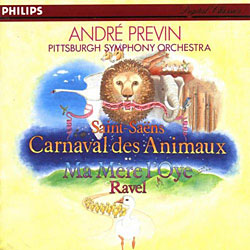 Saint-Saëns: Carnival of the Animals
Saint-Saëns: Carnival of the Animals